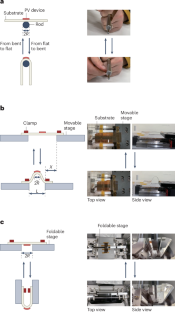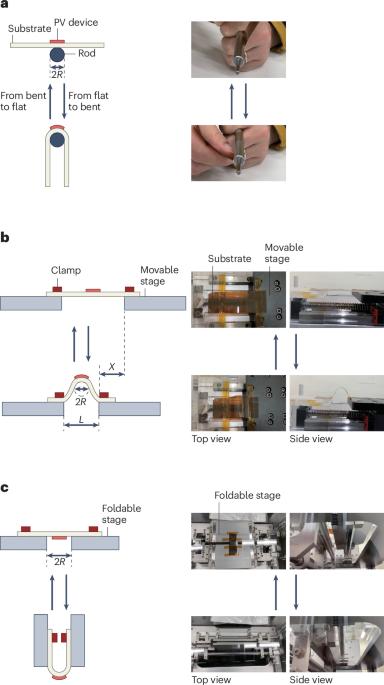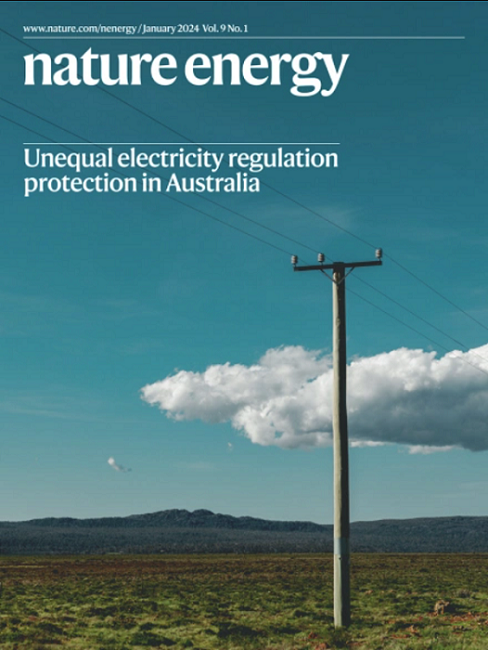用于鉴定柔性光伏机械性能的弯曲测试协议
IF 49.7
1区 材料科学
Q1 ENERGY & FUELS
引用次数: 0
摘要
柔性光伏(PV)设备是一个前景广阔的研究领域,在可穿戴、便携、室内和物联网应用方面具有潜力。近年来,柔性新兴光伏技术取得了长足进步,其功率转换效率(PCE)超过了 24%。然而,我们需要一个统一的协议来评估光伏性能、比较研究成果并评估柔性光伏的最新成就。在此,我们提出了一个在 1%应变下进行 1000 次弯曲循环的 PCE 测量协议。此外,我们还提出了若干良好实践指南,包括与弯曲程序、有无封装的柔性测试以及测试期间的环境条件(如温度、湿度和光照)相关的指南。值得注意的是,该指南强调了统一使用弯曲半径以及测试弯曲轴相对于电流方向的平行和垂直方向的重要性。这些建议旨在促进设备比较的一致性,并实现更好的可重复性。本文章由计算机程序翻译,如有差异,请以英文原文为准。


A bending test protocol for characterizing the mechanical performance of flexible photovoltaics
Flexible photovoltaic (PV) devices are a promising research field with potential for wearable, portable, indoor and internet-of-things applications. Substantial progress has been made in recent years, with flexible emerging PVs reporting power conversion efficiencies (PCEs) of over 24%. Yet, there is a need for a unifying protocol to assess PV performance, compare research results, and evaluate state-of-the-art achievements in flexible PVs. Here we present a protocol for measuring PCE over 1,000 bending cycles under 1% strain. Moreover, several good practice guidelines are proposed, including those related to bending procedures, flexibility testing with and without encapsulation, and ambient conditions during testing (for example, temperature, humidity and illumination). Notably, the importance of the uniform application of the bending radius and the testing of parallel and perpendicular orientations of the bending axis with respect to the direction of the electric current are emphasized. These recommendations aim to promote consistency in device comparison and allow for better reproducibility. The assessment of the mechanical properties of flexible solar cells lacks consistency. In this Perspective, Fukuda et al. outline standards and best practices for measuring and reporting photovoltaic performance under bending stresses, strain and load orientation.
求助全文
通过发布文献求助,成功后即可免费获取论文全文。
去求助
来源期刊

Nature Energy
Energy-Energy Engineering and Power Technology
CiteScore
75.10
自引率
1.10%
发文量
193
期刊介绍:
Nature Energy is a monthly, online-only journal committed to showcasing the most impactful research on energy, covering everything from its generation and distribution to the societal implications of energy technologies and policies.
With a focus on exploring all facets of the ongoing energy discourse, Nature Energy delves into topics such as energy generation, storage, distribution, management, and the societal impacts of energy technologies and policies. Emphasizing studies that push the boundaries of knowledge and contribute to the development of next-generation solutions, the journal serves as a platform for the exchange of ideas among stakeholders at the forefront of the energy sector.
Maintaining the hallmark standards of the Nature brand, Nature Energy boasts a dedicated team of professional editors, a rigorous peer-review process, meticulous copy-editing and production, rapid publication times, and editorial independence.
In addition to original research articles, Nature Energy also publishes a range of content types, including Comments, Perspectives, Reviews, News & Views, Features, and Correspondence, covering a diverse array of disciplines relevant to the field of energy.
 求助内容:
求助内容: 应助结果提醒方式:
应助结果提醒方式:


